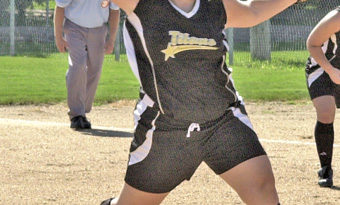Try These Tips to Make Small Gardens Seem Larger
LINCOLN, Neb. — A primary goal with many small gardens is to make them feel larger… to enlarge, if not the space, at least the perception of space.
Many gardeners do this by making better use of vertical space. Trees, shrubs and vines and physical elements like sculpture, fences, plant containers and trellises can extend the ground plane so the eye never stops but simply moves from the ground level upward and outward.
Gradual and varied changes of height – groundcover to flowerbed to shrub to tree – can give an impression of depth and complexity and keep the sense of space fluid and moving. A diversity of plants in varying heights also makes the yard less susceptible to plant-specific problems and attracts a wider variety of birds and other wildlife and pollinators.
Placed properly, trees and shrubs can obscure the view into the garden, making it appear larger and attracting attention into the space but not beyond it. It might seem best not to divide a limited space into smaller areas but the effect can be just the opposite, increasing rather than limiting the sense of space. Curved rather than straight pathways and plantings can make separate areas seem farther apart than they are. And careful attention to scale can make a striking difference. The size of trees, plants, sidewalks and any focus points can help make portions of the garden seem farther away or hide views into corners, making the end-points disappear.
In small lots, air circulation is often restricted by nearby buildings or privacy fences. Using a border of plants in varying heights means air can circulate more freely to avoid hot, stale spaces with limited air movement. They can also provide microclimates with varying degrees of sunlight, another element that is often restricted in small spaces. With a little more sunlight in a few spots, the color options increase as well. For shady areas, using variegated plants like hosta and Jack Frost brunnera in dark corners will draw interest and make them much more visually interesting.
If the garden is squeezed in by other gardens or an interesting view, why not “borrow” them? With the right-sized plants, you can frame views and make them appear part of your own landscape.
In a small yard, it’s important to have plants that offer several seasons of interest. Many shrubs or small trees have spring bloom, summer fruit and fall color: redbud, serviceberry, viburnum, currant, wahoo, dogwood, crabapple, chokeberry, etc. Vines can add vertical interest.
Evergreens are available in sizes to fit even the smallest garden and evergreen groundcovers like periwinkle, germander and ivy can help keep it green. If there’s enough sunshine, grasses are beautiful most of the year and there are grasslike sedges that can handle dry shade. For perennials, some of the best year-round workhorses for small gardens are: coralbells, Lenten rose, coneflower, black-eyed Susan and sedum.


